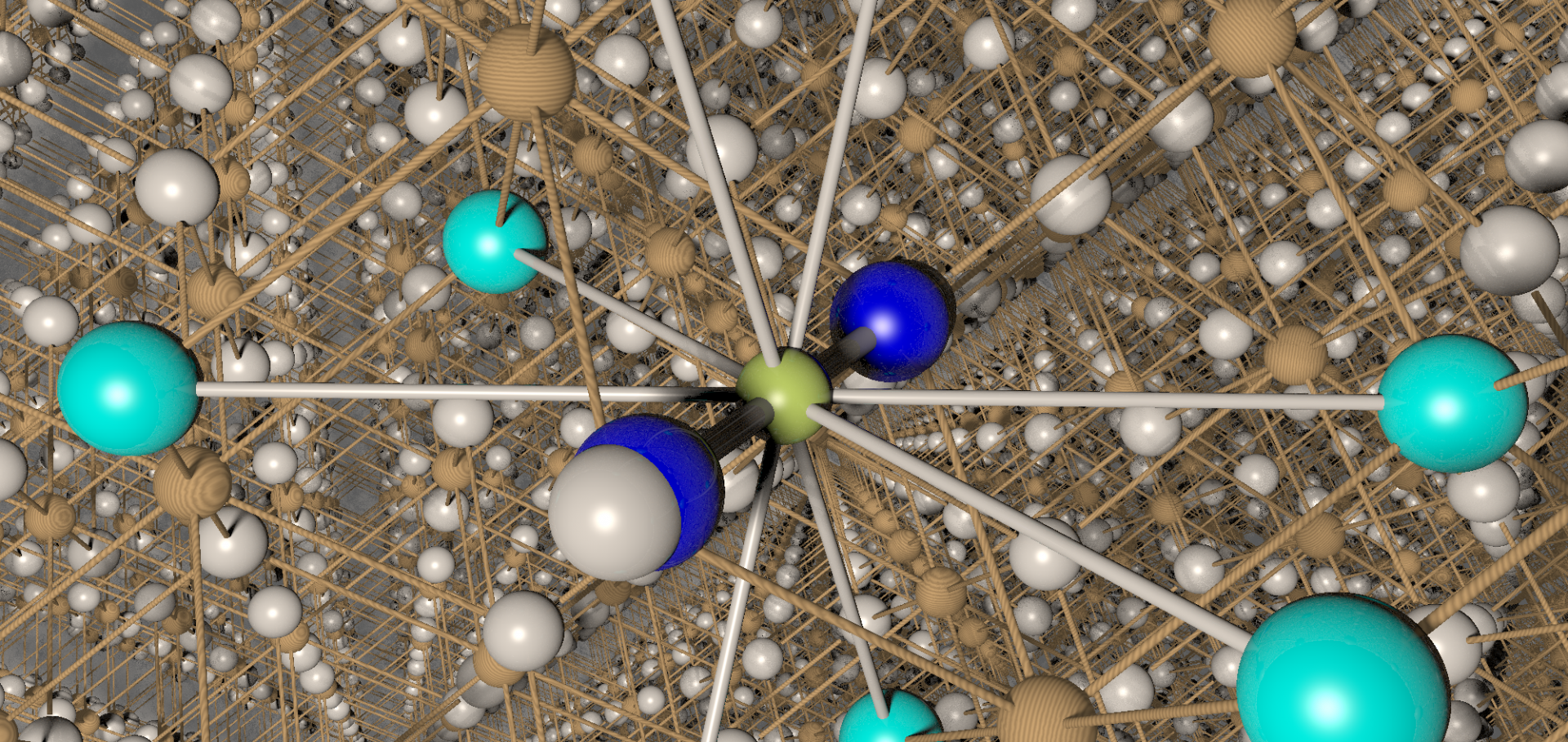Synthesis and characterization of two metallic spin-glass phases of Fe Mo4 Ge3
Physical Review B - Condensed Matter and Materials Physics 77:13 (2008)
Abstract:
Polycrystalline samples of Fe Mo4 Ge3 have been synthesized by the reduction of an oxide mixture at 1248 K and characterized by a combination of diffraction, muon spin relaxation (μ+ SR), Mössbauer spectroscopy, magnetometry, transport, and heat-capacity measurements. The compound adopts a tetragonal W5 Si3 structure (space group I4 mcm); the iron and molybdenum atoms are disordered over two crystallographic sites, 16k and either 4a or 4b. The synthesis conditions determine which fourfold site is selected; occupation of either leads to the presence of one-dimensional chains of transition metals in the structure. In both cases, the electrical resistivity below 200 K is ∼175 μΩ cm. The dc magnetization rapidly rises below 35 K (Fe Mo on 16k and 4b sites) or 16 K (16k and 4a sites), and a magnetization of 1 μB or 0.8 μB per Fe atom is observed in 4 T at 2 K. The ac susceptibility and the heat capacity both suggest that these are glasslike magnetic transitions, although the transition shows a more complex temperature dependence (with two maxima in χ″) when the 4b sites are partially occupied by iron. No long-range magnetic order is thought to be present at 5 K in either structural form; this has been proven by neutron diffraction and μ+ SR for the case when Fe and Mo occupy the 16k and 4b sites. © 2008 The American Physical Society.Exchange parameters of copper-based quasi-two-dimensional Heisenberg magnets measured using high magnetic fields and muon-spin rotation
(2008)
Magnetism and orbitally driven spin-singlet states in Ru oxides: A muon-spin rotation study
Physical Review B - Condensed Matter and Materials Physics 77:9 (2008)
Abstract:
We have used zero-field muon-spin rotation to study the local magnetic properties of SrRu O3, Y2 Ru2 O7, and La2 Ru O5. While SrRu O3 and Y2 Ru2 O7 give rise to coherent precession signals, in La2 Ru O5 we find no signature of long range magnetic order below the structural transition, but observe relaxation consistent with that expected due to a dimerization into spin-singlet states. In Y2 Ru2 O7 we observe two precession signals with different temperature dependences, consistent with the nature of the noncollinear ordering being temperature dependent. © 2008 The American Physical Society.Anomalous temperature evolution of the internal magnetic field distribution in the charge-ordered triangular antiferromagnet AgNiO2.
Phys Rev Lett 100:1 (2008) 017206


